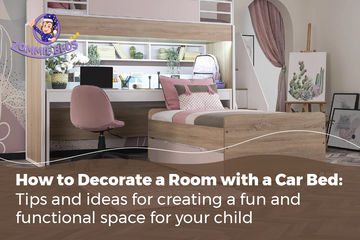The Science (and Art) of Color Selection: Keep It Colorful
par Priyanka Kamble sur Mar 09, 2023

What color is your favorite? When you were younger, it seemed like a significant question—one that revealed a lot about you, your preferences, and the people you spend time with. While discovering a person's favorite color may not be as significant as it once was as an adult, there is a lot of theory and even evidence to support the idea that the colors we surround ourselves with are more than just accessories. At Zoomie, we consider color to be one of the most important factors when designing our amusing children's furniture. Let's examine what color can reveal.
Green
You may have heard that liking green is correlated with intelligence; while this is difficult to prove, studies have shown that being around greenery can improve focus. Consider the feeling you get when you're in a Japanese garden or gazing out over a vast evergreen forest. Green is a low-frequency color, and as such, research has shown that it can lower stress and even improve concentration.
Orange
The key with orange is mood. An orange object's vivid color alone can conjure up the energizing citrus scent and its zesty scent. The fact remains that all this zest has its place and time. The best environment for falling asleep might not be a bedroom that is bright orange as a result. Aside from being easier on the eyes, it might also work better as an accent color.
Blue
Anyone who enjoys Miles Davis' music is aware that being "kind of blue" refers to more than just being depressed. On the other hand, a space with a lot of blue can promote introspection and focus, making it easier for you to stay calm and accomplish more. According to some theories, people whose jobs require intense concentration for extended periods of time perform better in blue environments. So play some jazz, read a book to your child, and don't be put off by the blues.
Combine Everything
Naturally, a perfect space—whether for rest or play—won't be all one color. You'll combine colors to create a palette that both energizes and relaxes, or maybe just looks good. Even so, childhood can and ought to be a time for exploration, imagination, and color. It should be noted that a child's room shouldn't be transformed into a parent's research facility by the use of color. In the end, a child's room should, to the greatest extent possible, reflect his or her preferences. Having said that, fun furniture for kids can be a good combination of colors that uplift, enliven, and give a child a sense of belonging in a unique space. Everyone wants their room to be like that.




